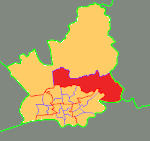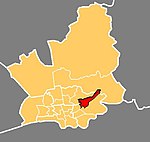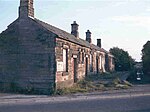Courtaulds Red Scar Works Preston
Red Scar Works was built in 1939 by Courtaulds and produced rayon. It was located in Ribbleton Preston off Longridge Road. The closure of the works was announced in November 1979 and the issue raised in the UK Parliament House of Commons by the constituency MP. At the time of closure approximately 2,600 people were employed there but there were approximately 4,000 at its peak. It was the largest rayon producing site in Britain. Two main products were manufactured with one being tyre cord by a process known as CSPT – Continuous Spinning Process Tenasco. Two main denier of this product were manufactured. The other product was a general textile called Bright. A range of deniers of this were produced in a range of colours. The trade name for the coloured product was Duracol. At the time of closure, one reason given by management for the closure was the rising popularity of steel belt radial tires thus reducing demand for tyre cord. The factory was connected by rail as a branch of what was the Preston and Longridge Railway. The plant had its own power production facility. The main raw materials brought in by rail were coal, sulfuric acid, sodium hydroxide, carbon disulfide and wood pulp.
Excerpt from the Wikipedia article Courtaulds Red Scar Works Preston (License: CC BY-SA 3.0, Authors).Courtaulds Red Scar Works Preston
B6243, Preston
Geographical coordinates (GPS) Address Nearby Places Show on map
Geographical coordinates (GPS)
| Latitude | Longitude |
|---|---|
| N 53.7845 ° | E -2.6454 ° |
Address
Wholesale Carpets & Suites
B6243
PR2 5BL Preston
England, United Kingdom
Open on Google Maps











